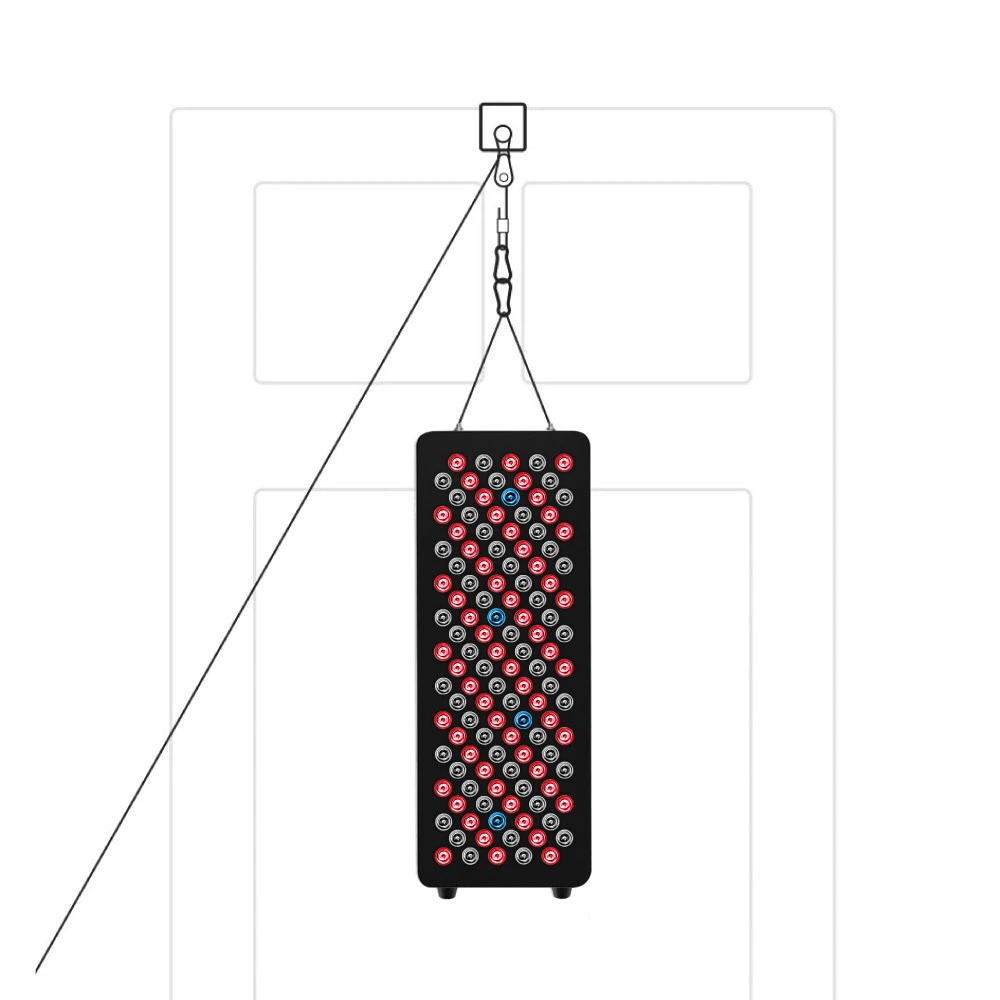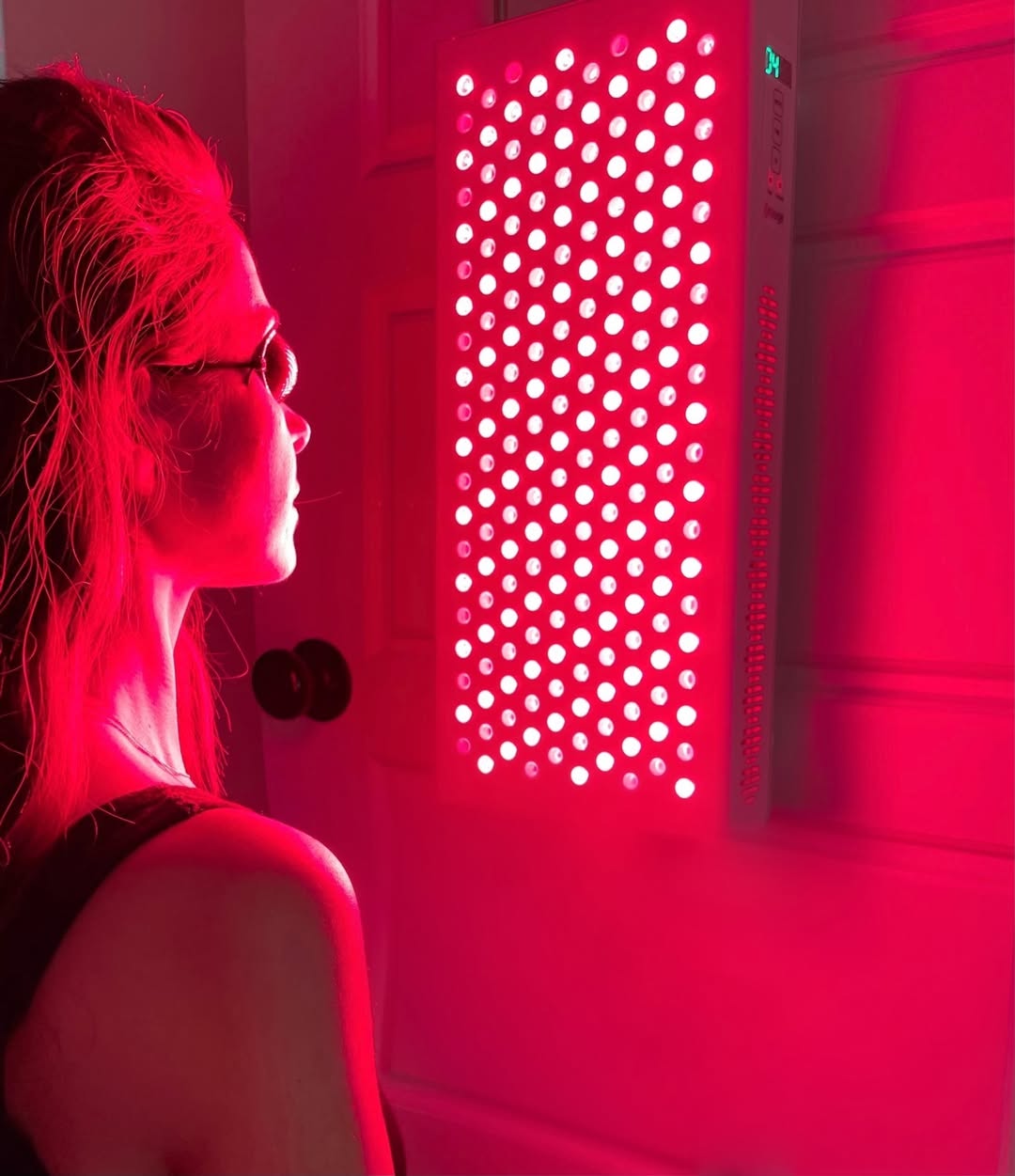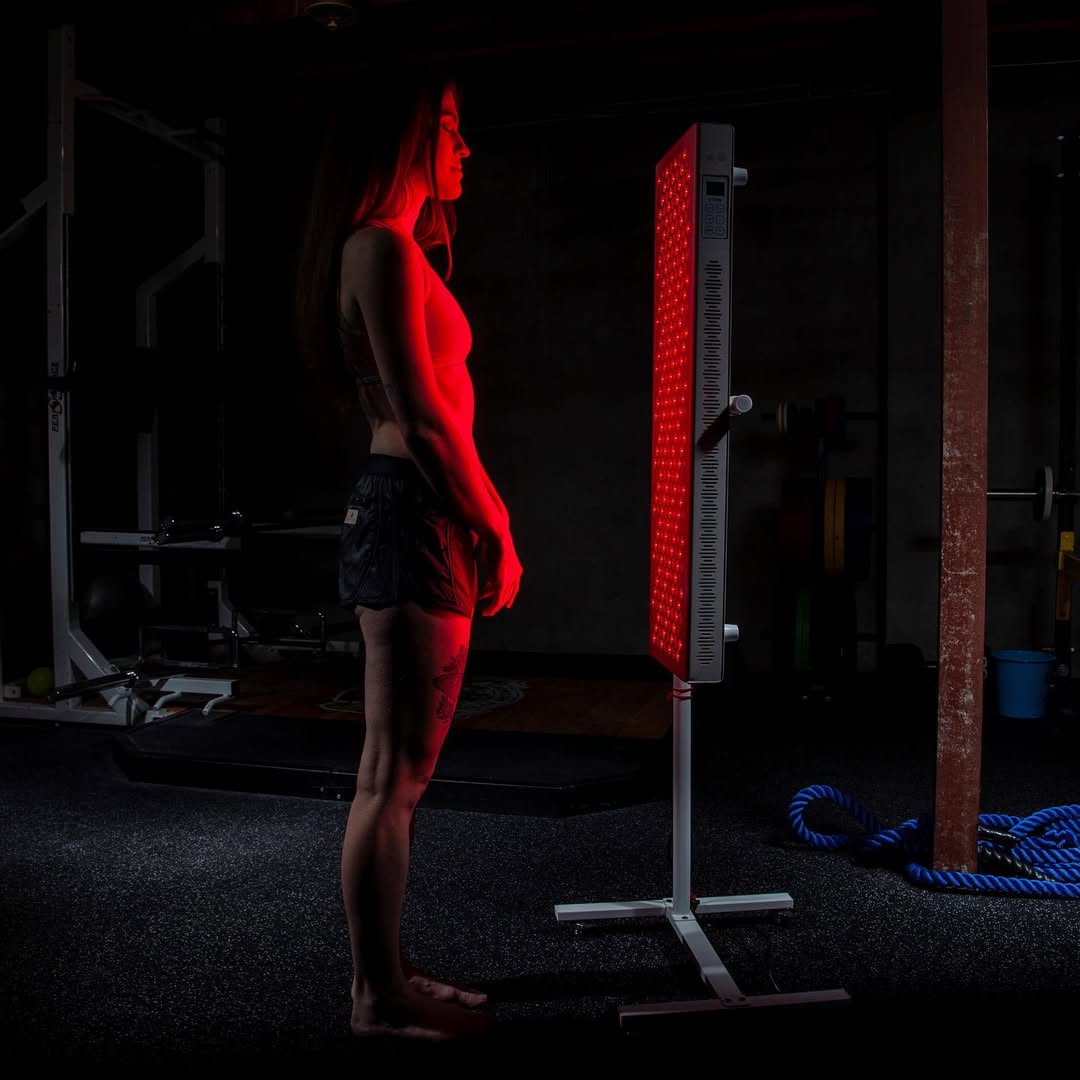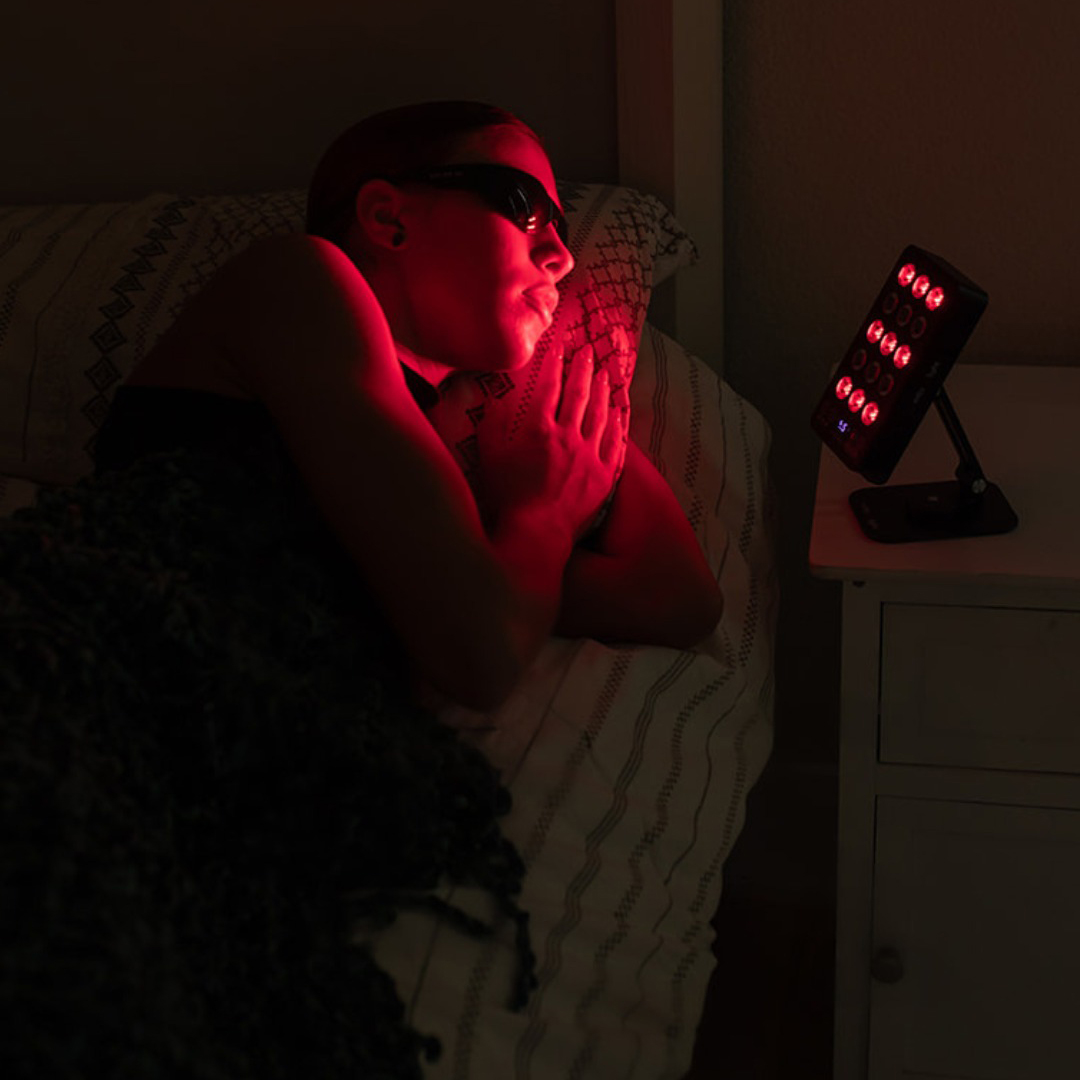![]() Free Shipping
Free Shipping ![]() Buy Now, Pay Later
Buy Now, Pay Later ![]() Eligible
Eligible
Red Light Therapy for Ankles: A Complete Guide to Pain Relief and Recovery
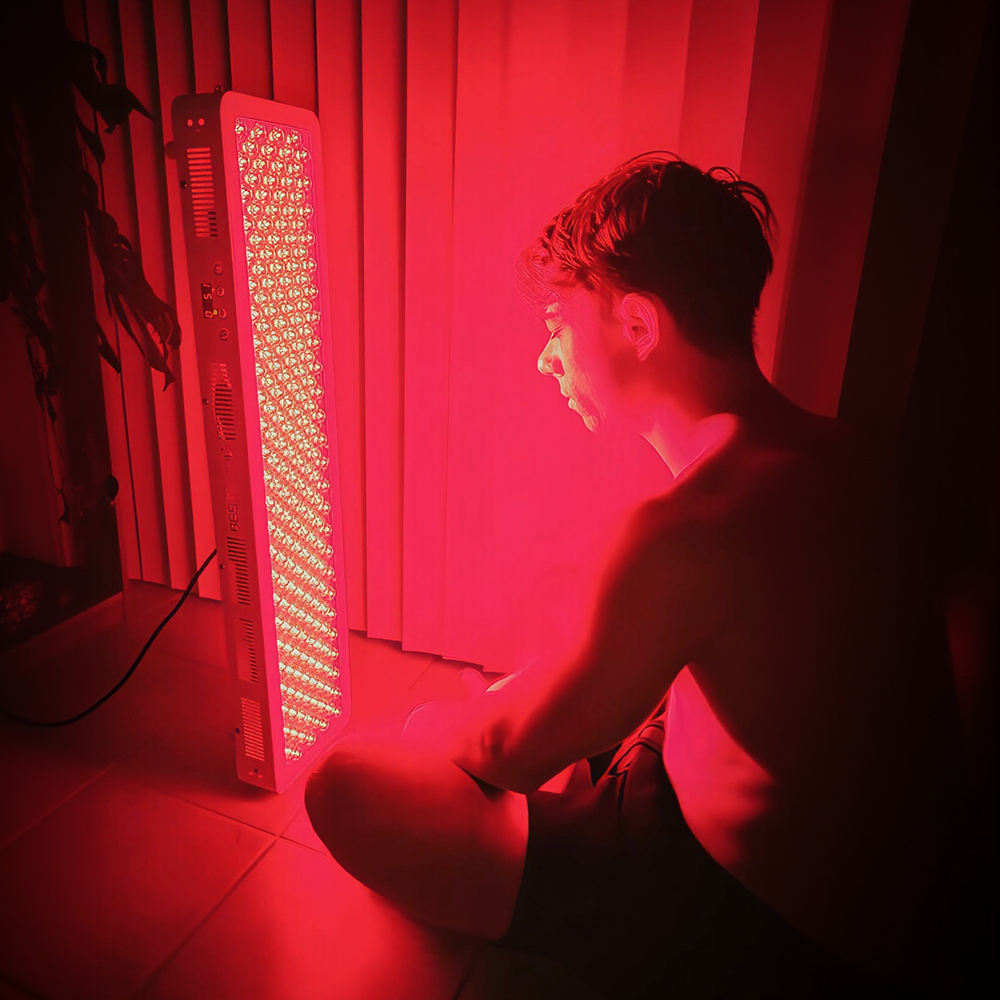
Red light therapy (RLT), also known as photobiomodulation (PBM) or low-level laser therapy (LLLT), is a groundbreaking, non-invasive treatment that uses specific wavelengths of red and near-infrared (NIR) light. This light energy penetrates the skin and is absorbed by the mitochondria in our cells, often called the “powerhouses of the cell.”
The primary effect is a boost in cellular energy (ATP) production. This enhanced energy allows cells to function more efficiently, repair themselves faster, and reduce inflammation. For a complex and often overworked joint like the ankle, this cellular rejuvenation can be transformative.
Why Target the Ankle with Red Light Therapy?
The ankle is a critical weight-bearing joint that is highly susceptible to injury and chronic conditions. Its complex structure of bones, ligaments, and tendons makes recovery a slow and delicate process. Traditional treatments like rest, ice, and pain medication often only manage symptoms.
Red light therapy offers a different approach by addressing the root cause of pain and slow healing at the cellular level. As Dr. Michael Hamblin, a leading photomedicine researcher, once stated:
“Photobiomodulation works on the cellular powerhouse, the mitochondria, to enhance energy production, reduce oxidative stress, and kick-start a cascade of healing and anti-inflammatory processes.”
Key Benefits of Red Light Therapy for Ankles
The application of red and near-infrared light to the ankle can lead to a multitude of therapeutic benefits.
Accelerated Injury Recovery
Whether it’s a sprain, strain, or fracture, RLT speeds up the body’s natural healing processes. By increasing circulation and cellular energy, it helps rebuild damaged tissue, ligaments, and tendons more quickly.
Reduction of Pain and Inflammation
RLT has a powerful anti-inflammatory effect, calming the swollen, painful tissues common in conditions like tendonitis and arthritis. It also helps modulate pain signals, providing natural relief without pharmaceuticals.
Improved Joint Mobility and Flexibility
Chronic stiffness in the ankle can severely limit mobility. By reducing inflammation and promoting the health of the joint capsule, RLT can help restore a greater range of motion.
Enhanced Athletic Performance and Recovery
Athletes use RLT both before activity to prime the muscles and joints, and after to reduce delayed onset muscle soreness (DOMS) and accelerate recovery from intense training.
Common Ankle Conditions Treated with Red Light Therapy
This therapy is remarkably versatile. Here are some of the most common ankle ailments it can help address:
- Ankle Sprains and Strains: Promotes faster healing of overstretched or torn ligaments.
- Achilles Tendonitis: Reduces inflammation and pain in the Achilles tendon.
- Plantar Fasciitis: While targeting the foot, treatment often includes the ankle area to improve overall lower leg circulation and reduce connective tissue inflammation.
- Arthritis (Osteoarthritis & Rheumatoid): Alleviates joint pain, stiffness, and swelling.
- Post-Surgical Healing: Enhances recovery after ankle surgery (e.g., for fractures or reconstructions).
- General Ankle Pain and Stiffness: Provides relief for non-specific pain and improves joint function.
Red Light Therapy vs. Traditional Ankle Treatments
How does RLT stack up against conventional methods? The following table highlights the key differences.
| Feature | Red Light Therapy | Traditional Methods (Ice, NSAIDs, Rest) |
|---|---|---|
| Mechanism | Addresses root cause at cellular level | Manages symptoms (pain, swelling) |
| Side Effects | Non-invasive, virtually none | Stomach issues (NSAIDs), slowed healing (over-icing) |
| Healing Time | Can accelerate the natural healing process | Follows standard, often slower, healing timeline |
| Long-Term Benefits | Improves cellular health and joint function | Primarily offers short-term relief |
| Convenience | Can be used at home with a personal device | Requires ongoing purchase of consumables |
How to Use Red Light Therapy for Your Ankles
Applying RLT to your ankles is a straightforward process.
- Preparation: Clean and dry the skin around your ankle. Remove any clothing or jewelry that could block the light.
- Positioning: Sit comfortably and position the light device 6 to 12 inches from the target area. You should feel a gentle warmth, but no discomfort.
- Treatment Time: A typical session lasts between 10 to 20 minutes per ankle. Consistency is key.
- Frequency: For acute injuries, daily treatment is often recommended. For chronic conditions, 3-5 sessions per week may be sufficient.
VELLGUS Elite V2
THE #1 RATED RED LIGHT DEVICE
VELLGUS pro V2
THE #1 RATED FULL BODY RED LIGHT DEVICE
A user of a home red light therapy panel shared:
*”After struggling with chronic ankle stiffness from an old basketball injury, using a red light panel for 10 minutes a day has been a game-changer. The stiffness is significantly reduced, and I feel like I have my old range of motion back.”*
What to Look for in a Red Light Therapy Device
If you’re considering a home device, pay attention to these key specifications:
- Wavelengths: Look for a combination of red (630-660nm) and near-infrared (810-850nm). NIR penetrates deeper, making it ideal for joint and tendon issues.
- Power Density (Irradiance): Measured in mW/cm², a higher power density means shorter treatment times and more effective sessions.
- Treatment Area Size: For ankles, a smaller panel or a wearable wrap can be perfectly adequate and more convenient than a large, full-body panel.
Safety and Considerations
Red light therapy is FDA-cleared and considered very safe for most people. It is non-toxic, non-invasive, and does not use harmful UV radiation. However, it is always recommended to:
- Consult with your doctor or a physical therapist before starting any new treatment, especially if you have a serious medical condition.
- Wear protective eyewear if the device manual recommends it.
- Follow the manufacturer’s instructions for treatment time and distance carefully.
Conclusion: A Brighter Path to Ankle Health
Red light therapy represents a significant leap forward in managing ankle pain and enhancing recovery. By harnessing the natural power of light to stimulate cellular repair and reduce inflammation, it offers a safe, effective, and drug-free solution for everything from acute sprains to chronic arthritis. Whether you seek treatment in a clinic or invest in a high-quality home device, red light therapy can help you step forward into a life with less pain and greater mobility.



